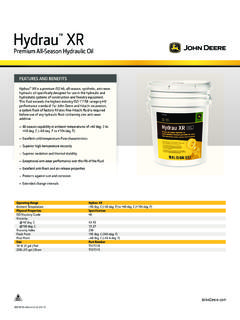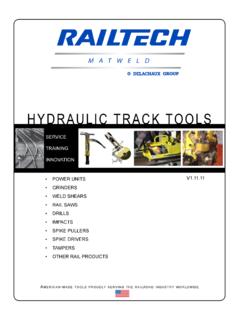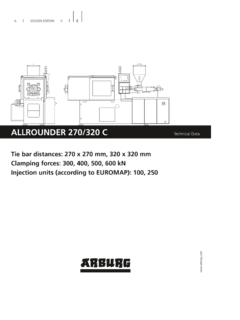Transcription of 6. VVT-i (Variable Valve Timing-intelligent) System
1 ENGINE 1ZZ-FE ENGINE169EG35172CR07 Camshaft Position SensorEngine Coolant Temp. SensorThrottle Position SensorECMC amshaft TimingOil Control ValveMass Air Flow MeterCrankshaft Position SensorCrankshaft Position SensorMass Air Flow MeterThrottle Position SensorCamshaft Position SensorEngine Coolant Temp. SensorVehicle Speed SignalTarget Valve TimingECMFeed BackCorrectionActual Valve TimingCamshaft timing Oil Control ValveDuty Control386. VVT-i ( variable Valve timing -intelligent) SystemGeneralThis System controls the intake camshaft Valve timing so as to obtain balance between the engine output,fuel consumption and emission control performance. The actual intake side Valve timing is feed backby means of the camshaft position sensor for constant control to the target Valve 1ZZ-FE ENGINE165EG34 PlungerTo VVT-i Controller(Advance Side)To VVT-i Controller (Retard Side)ConnectorSleeveSpool ValveSpringDrainOil PressureDrainCoil39 Construction1)
2 VVT-i ControllerThis controller consists of the housing driven from the timing chain and the vane coupled with the oil pressure sent from the advance or retard side path at the intake camshaft causes rotation in theVVT-i controller vane circumferential direction to vary the intake Valve timing the engine is stopped, the intake camshaft will be in the most retarded state to ensure hydraulic pressure is not applied to the VVT-i controller immediately after the engine has beenstarted, the lock pin locks the movement of the VVT-i controller to prevent a knocking PinIn OperationVane (Fixed on Intake Camshaft)HousingAt a StopLock PinOil PressureIntake Camshaft2) Camshaft timing Oil Control ValveThe camshaft timing oil control Valve controls thespool Valve position in accordance with the dutycontrol from the ECM thus allocating the hydrau-lic pressure that is applied to the VVT-i controllerto the advance and the retard side.
3 When the en-gine is stopped, the camshaft timing oil controlvalve is in the most retarded 1ZZ-FE ENGINEA dvance SignalDuty Ratio157EG35 Retard SignalDuty Ratio157EG36 Hold SignalDuty Ratio157EG37 VVT-i ControllerHousing178EG15178EG16178EG17 AdvanceRetardHoldRotating DirectionOil PressureECMOil PressureECMECMR otatingDirectionOil PressureVane40 Operation The camshaft timing oil control Valve selects the path to the VVT-i controller according to the advance,retard or hold signal from the ECM. The VVT-i controller rotates the intake camshaft in the timing ad-vance or retard position or holds it according to the position where the oil pressure is timing OilControl Valve DriveSignalDescriptionWhen the camshaft timing oil con-trol Valve is positioned as illustra-tion by the advance signal from theECM, the resultant oil pressure isapplied to the timing advance sidevane chamber to rotate the cam-shaft in the timing advance the camshaft timing oil con-trol Valve is positioned as illustra-tion by the retard signal from theECM.
4 The resultant oil pressure isapplied to the timing retard sidevane chamber to rotate the cam-shaft in the timing retard ECM calculates the targettiming angle according to the trav-eling state to perform control asdescribed above. After setting atthe target timing , the Valve timingis held by keeping the camshafttiming oil control Valve in the neu-tral position unless the travelingstate adjusts the Valve timing at thedesired target position and pre-vents the engine oil from runningout when it is 1ZZ-FE ENGINETDCL atest timingINEX178EG18To retard sideTo advance sideEXEXININ178EG19178EG20 BDC41 In proportion to the engine speed, intake air volume, throttle position and water temperature, the ECMcalculates an optimal Valve timing under each driving condition and control the camshaft timing oil con-trol Valve .
5 In addition, ECM uses signal from the camshaft position sensor and the crankshaft positionsensor to detect the actual Valve timing , thus performing feed back control to achieve the target valvetiming. Operation During Various Driving Condition (Conceptual Diagram) 162EG46 EngineLoadFull Load PerformanceRange 4 Range 5 Range 3 Range 1, 2 Engine SpeedOperation StateRangeValve TimingObjectiveEffectDuring Idling1 Minimizing overlap toreduce blow back to theintake sideStabilizedidling rpmBetter fueleconomyAt Light Load2 Decreasing overlap toeliminate blow back to theintake sideEnsuredenginestabilityAt Mediumload3 Increasing overlap toincrease internal EGR forpumping loss eliminationBetter fueleconomyImprovedemissioncontrolENGINE 1ZZ-FE ENGINEEXINTo advanceside178EG21 BDCTDCINEXINEXINEX178EG22178EG23178EG24 Latest timingTo retardsideLatest timing42 Operation StateRangeValve TimingObjectiveEffectIn Low toMedium SpeedRange withHeavy Load4 Advancing the intake valveclose timing for volumetricefficiency improvementImprovedtorque in lowto mediumspeed rangeIn High SpeedRange
6 WithHeavy Load5 Retarding the intake valveclose timing for volumetricefficiency improvementImprovedoutputAt LowTemperatures Minimizing overlap toprevent blow back to theintake side for reduction offuel increase at lowtemperatures, and stabilizingthe idling rpm for decreasingfast idle rotationStabilized fastidle rpmBetter fueleconomyUpon Starting/Stopping theEngine Minimizing overlap tominimize blow back to theintake sideImprovedstartability







